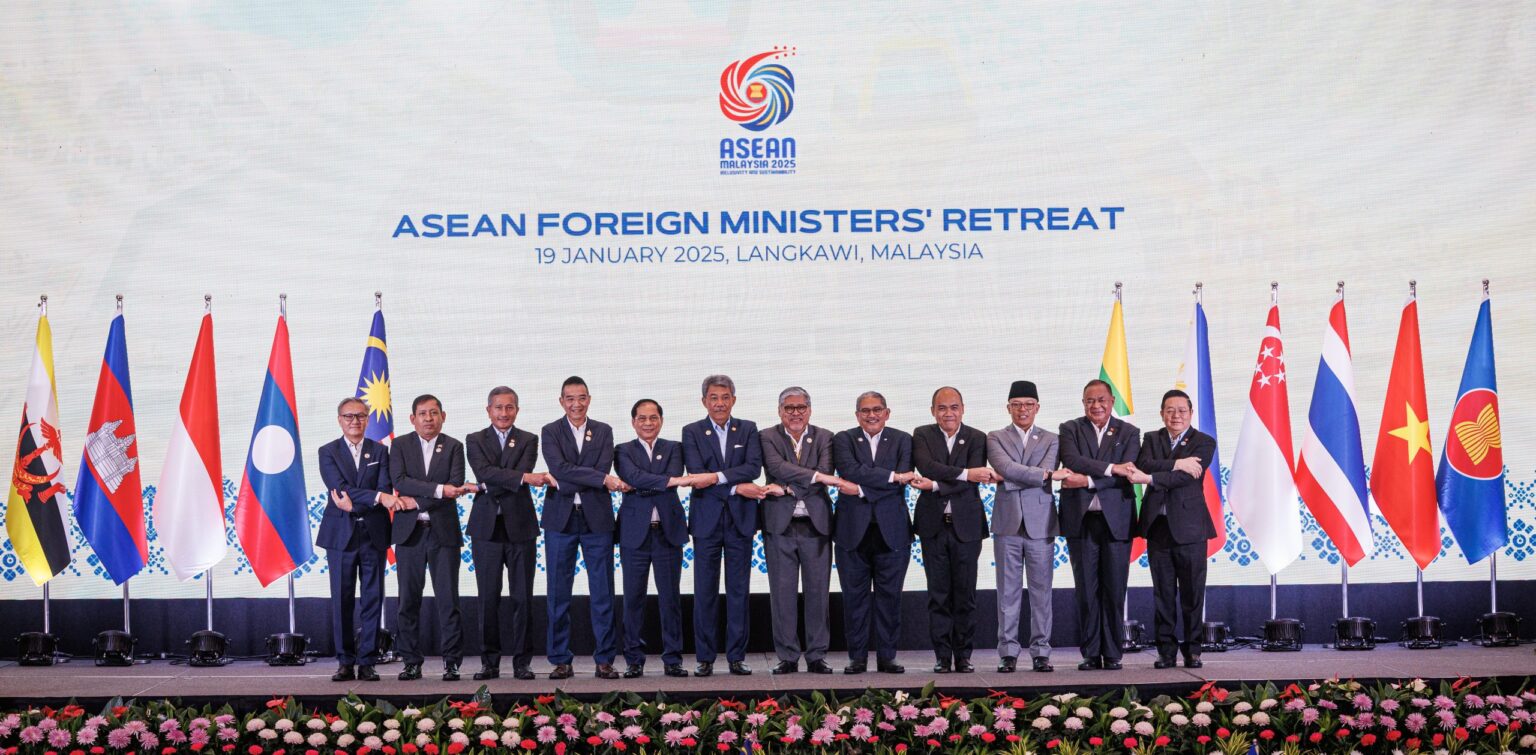ASEAN faces a growing challenge: most of its digital infrastructure, platforms, and services depend heavily on external powers. The dominance of Chinese and American companies in areas like 5G networks, cloud computing, and artificial intelligence leaves ASEAN vulnerable to geopolitical pressures and technology lock-in. This dependency limits the region’s ability to control its own digital future. The question is whether ASEAN can develop indigenous digital ecosystems that reduce reliance on foreign providers and strengthen digital sovereignty.
A digital ecosystem includes physical infrastructure, software platforms, regulatory frameworks, skilled talent, and a vibrant startup environment. These elements interact to create a self-sustaining digital economy. For ASEAN, building such an ecosystem requires aligning national priorities, coordinating regionally, and investing in long-term capabilities.
Currently, the digital landscape in ASEAN shows a heavy presence of foreign firms. Huawei and ZTE dominate 5G infrastructure in many countries. Cloud services come mainly from American giants like Amazon, Microsoft, and Google, though Chinese providers such as Alibaba Cloud and Huawei Cloud are expanding their regional footprint. In AI development, both U.S. and Chinese firms maintain strong influence through commercial projects and research partnerships. This mix leaves many ASEAN countries in a state of digital dependence, lacking alternatives that align with local needs and values.
Developing indigenous ecosystems faces several hurdles. Funding and investment remain uneven across the region. Countries like Singapore and Indonesia have more resources and more developed tech sectors. Others, including Laos, Cambodia, and Myanmar, have limited digital infrastructure and human capital. This unevenness creates fragmentation that hinders cooperation. A shared digital ecosystem requires standards and interoperability, but ASEAN’s digital policies vary widely by country.
Efforts exist to address these gaps. ASEAN’s Digital Masterplan 2025 outlines goals for digital connectivity, innovation, and governance. Initiatives like the ASEAN Data Management Framework and AI Governance Guidelines aim to harmonize policy approaches. Some countries pursue national digital strategies that emphasize local capacity. Malaysia’s MyDIGITAL initiative focuses on developing cloud infrastructure and AI talent. Indonesia’s GoTo ecosystem, which combines ride-hailing, e-commerce, and financial services, shows how local companies can scale and innovate.
Despite progress, these initiatives often rely on foreign technology and investment. For example, national cloud strategies frequently partner with U.S. or Chinese providers for infrastructure and software. Local startups face challenges accessing capital and markets, limiting their growth. Talent shortages remain acute, with demand for data scientists, cybersecurity experts, and software engineers outpacing supply. Education and training systems struggle to keep up with rapid technological change.
Regional cooperation could help fill these gaps. ASEAN’s strength lies in its collective market and shared interests. Coordinated investment in cross-border data centers, regional digital identity systems, and common standards could lower costs and foster innovation. Public-private partnerships could bring together governments, local firms, and multinational corporations to build infrastructure that serves ASEAN’s unique context. Pooling resources and knowledge could reduce duplication and accelerate scale.
However, ASEAN’s track record on integration is mixed. Political sensitivities and national priorities often slow decision-making. Some member states prioritize sovereignty and control over cooperation, fearing loss of influence or security risks. Others struggle with governance capacity or lack a clear digital vision. Building a regional digital ecosystem requires overcoming these hurdles and aligning diverse interests.
Developing indigenous ecosystems also means balancing openness and control. Digital economies thrive on global connections and innovation flows. Excessive protectionism risks isolating ASEAN from technology trends and investments. Yet, open dependence on foreign providers risks exposure to geopolitical conflicts and loss of control over data and infrastructure. ASEAN countries must design policies that protect critical assets while remaining attractive to global partners.
The strategic importance of this challenge grows as the U.S.–China rivalry intensifies. Both powers compete to expand influence in ASEAN’s digital space. Chinese companies offer affordable infrastructure but raise security concerns. U.S. firms provide advanced technologies and governance models but often with stricter terms and slower delivery. ASEAN states use a hedging strategy, mixing suppliers and avoiding exclusive alignment. This approach provides flexibility but also creates complexity and risk of fragmentation.
Building indigenous ecosystems offers ASEAN a path toward greater digital autonomy. It can reduce vulnerability to external pressure and allow more tailored solutions for local markets. Local innovation can better address cultural and linguistic differences, legal frameworks, and business environments. Indigenous ecosystems also promote talent retention and economic diversification.
The question remains whether ASEAN can mobilize the necessary resources and political will. Technology development requires sustained investment, skilled workforce development, and a supportive regulatory environment. Governments need to prioritize digital policies and coordinate with private sector players. Regional institutions must strengthen mechanisms for collaboration and dispute resolution.
Success stories provide useful lessons. Indonesia’s GoTo shows how integrating digital services can create scalable, competitive ecosystems. Singapore’s Smart Nation program demonstrates effective government-led innovation with strong regulatory frameworks and talent development. Malaysia’s investments in cloud infrastructure highlight the importance of public-private partnerships.
ASEAN’s future digital landscape depends on its ability to evolve beyond dependency and build self-reliant ecosystems. This shift will not happen overnight. It requires strategic vision, coordinated action, and willingness to experiment and learn. Countries must focus on practical steps: investing in local data centers, supporting startups, improving digital skills, harmonizing regulations, and fostering innovation clusters.
Reducing dependency also means rethinking foreign partnerships. ASEAN should seek balanced relationships that encourage technology transfer, capacity building, and fair terms. Rather than competing for unilateral control, external powers should be partners in regional digital development. ASEAN can demand transparency, security guarantees, and respect for local autonomy.
The region’s digital sovereignty will shape economic competitiveness, political autonomy, and social development for decades. ASEAN has the opportunity to design a digital ecosystem that reflects its own priorities and values. Achieving this will require concerted effort from governments, businesses, and civil society. The benefits include stronger resilience, more inclusive growth, and greater control over digital destiny.
In sum, ASEAN’s goal to develop indigenous digital ecosystems is challenging but necessary. It offers a way to reduce reliance on external powers and shape a sustainable digital future. The task demands pragmatic policies, regional collaboration, and investment in people and technology. Success will enhance ASEAN’s position in the global digital economy and strengthen its strategic autonomy.



